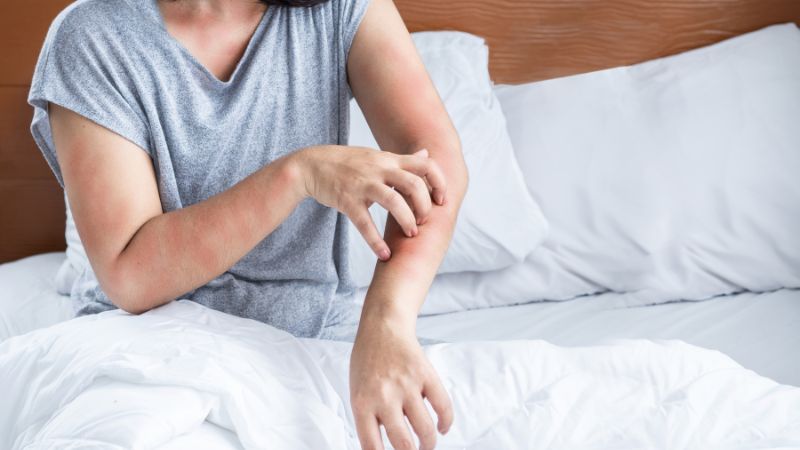Imagine waking up with a series of itchy bites on your skin. Your first thought might be bed bugs, but could it be something else? Bed bug bites are often confused with other types of insect bites, especially mosquito bites. This confusion can lead to misidentification and delay the correct response. Let’s explore the differences and similarities between bed bug bites and other common insect bites to better understand what might be causing your discomfort.
Understanding Bed Bug Bites
Bed bugs are small, nocturnal insects that feed on human blood. They leave behind bites that are:
1. Red and Itchy
Bed bug bites usually appear as small, red, itchy bumps. They can become swollen or inflamed, depending on your skin's reaction.
2. Patterned
These bites often occur in a straight line or cluster, as bed bugs tend to bite several times in the same area.
3. Located on Exposed Skin
Bed bugs typically bite areas of skin that are exposed while sleeping, like arms, legs, face, and neck.
Bed Bug Bites vs. Mosquito Bites
While bed bug bites have distinct characteristics, they are commonly mistaken for mosquito bites. Mosquito bites tend to be randomly placed, as mosquitoes will bite wherever they land. Mosquito bites are also more likely to cause immediate, isolated swelling and are not typically found in a line or cluster.
Other Bites That Resemble Bed Bug Bites
1. Flea Bites
Flea bites are another common culprit. These bites are smaller than bed bug bites and usually appear around the ankles or legs. They are intensely itchy and may turn into blisters.
2. Spider Bites
Spider bites vary widely but can sometimes look like bed bug bites. However, most spider bites are singular, not in a pattern, and can sometimes lead to more severe symptoms, like nausea or fever.
3. Tick Bites
Tick bites are less likely to be confused with bed bug bites but can sometimes appear similar. A key difference is that ticks often remain attached to the skin.
Identifying the Culprit
To determine if your bites are from bed bugs, look for additional signs of bed bug infestation, such as:
1. Physical Sightings
Check your bed, mattress seams, and nearby furniture for tiny, reddish-brown bugs, especially at night.
2. Blood Stains and Excrement
Look for tiny blood spots or dark, rusty-colored bed bug excrement on your sheets.
3. Musty Odor
A strong, unpleasant, musty odor from the bugs' scent glands can indicate a large infestation.
Responding to Bed Bug Bites
If you suspect bed bug bites:
1. Treat the Bites
Use anti-itch creams and oral antihistamines to relieve itching and swelling.
2. Inspect and Clean
Thoroughly inspect your sleeping area and clean all bedding, curtains, and clothing in hot water.
3. Professional Help
Consider hiring a pest control professional to properly identify and treat an infestation.
Conclusion
Bed bug bites can be easily confused with other insect bites, especially mosquito bites. Understanding the differences in appearance, pattern, and associated symptoms is crucial for correct identification. If you suspect bed bug bites, look for additional signs of infestation and take appropriate action. Proper identification is key to effectively treating the bites and dealing with the underlying cause.


